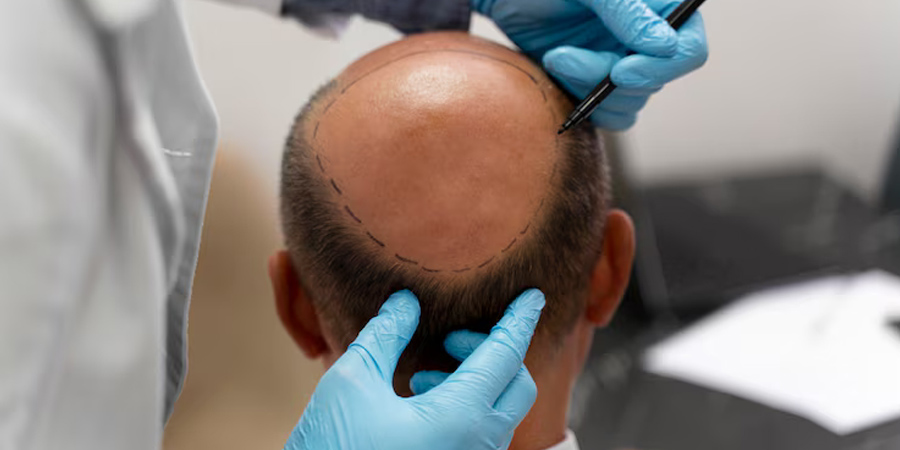
Are you experiencing hair loss? Are you thinking about going for Hair transplant surgery? Curious to know what it is all about? You have certainly landed on the right page.
Hair transplant surgery has become a trusted solution to restore confidence and a youthful appearance. Here in this post, we are going to discuss everything one needs to know about hair transplant surgery to proceed
Types of Surgical Hair RestorationThere are two primary types of surgical hair transplant procedures – Follicular Unit Strip Surgery (FUSS) and Follicular Unit Extraction (FUE).
FUSS involves extracting a narrow strip of scalp and transplanted to balding areas. It addresses larger zones but leaves a linear scar. FUE extracts individual follicular units using a specialized punch tool, leaving no scarring and allowing smaller treatments, though it is more complex and time-consuming. Both have high success rates when performed by a skilled surgeon.
How Does It Works?On the day of the procedure, local anaesthesia will be administered to keep the patient comfortable. The process typically takes 6-8 hours depending on coverage planned. With FUSS, the strip is removed, divided under a microscope and implanted. In FUE, a specialized punch tool gently extracts individual grafts which are implanted right away to maximize sustainability. Implanting involves making tiny incisions in the recipient area using a micro-needle and placing the grafts inside with tweezers. Sutures or tape may be used post-surgery depending on procedure type. Medications and care instructions will be provided for hair transplant recovery.
Post Treatment: Things You Should KnowMost patients take 5-7 days off work post-procedure for hair transplant recovery. Temporary swelling, bruising, head soreness treated with medications and scab formation over implant sites that naturally falls off within 2-3 weeks can be expected. No strenuous activity, sweating or bending occurs during initial recovery. Loose surgical tape or sutures are removed after 5-7 days. New finer hair growth emerges in 3-6 months as transplanted follicles enter the growing phase. Strict avoidance of direct sun exposure, chlorinated pools, certain medications and proper post-op care helps maximize results. The majority of grafts typically grow back within 3-6 months and continue thickening for 1-2 years.
Connecting With The Right PractitionerSelecting an experienced, accredited hair restoration surgeon is essential to achieve natural outcomes and avoid complications. Key clinic selection factors include surgeon/clinic reputation and experience portfolio, medical accreditations, modern graft extraction and implantation techniques, high-quality clinical settings and technology, consulting availability and pricing transparency.
With refined techniques and abundant graft yields from processes like FUE, hair transplant and hair restoration surgery are a viable solution for restoring hairlines and density. It requires post-op diligence and months to manifest full results but tremendously boosts confidence and appearance. For world-class hair restoration services, consider visiting SkinoHair. You get quality procedures at affordable costs.
Final ThoughtsSo, this guide aimed to cover all valuable aspects about hair transplant procedure types, common coverage areas, costs involved, recovery expectations, and clinic selection. Modern hair restoration truly empowers those experiencing hair loss to remedy it cosmetically when hereditary treatments prove inadequate. Making an informed choice is important to gain natural, long-lasting results and feel poised with renewed self-assurance.




